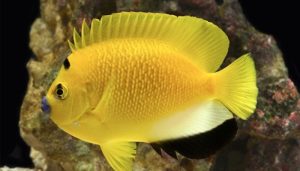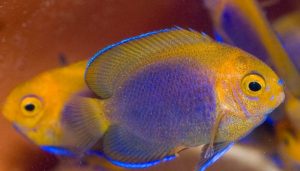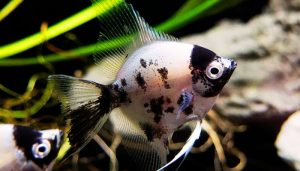If you’ve recently noticed tiny, jelly-like clusters clinging to the glass or decorations in your aquarium, congratulations—you’re about to embark on a fascinating journey into the world of aquatic snails! Hatching snail eggs in fish tank is a rewarding experience that allows you to witness nature’s delicate cycle right in your home aquarium.
Whether you’re a seasoned aquarist or a beginner, this guide will help you ensure those tiny eggs develop into healthy, thriving snails.
But hatching snail eggs isn’t just about waiting and watching; it requires a bit of know-how. Factors like water conditions, tank mates, and even where the eggs are laid can significantly impact the hatching process.
By understanding the unique needs of these tiny creatures, you’ll not only succeed in hatching snail eggs but also contribute to a balanced and vibrant tank ecosystem.
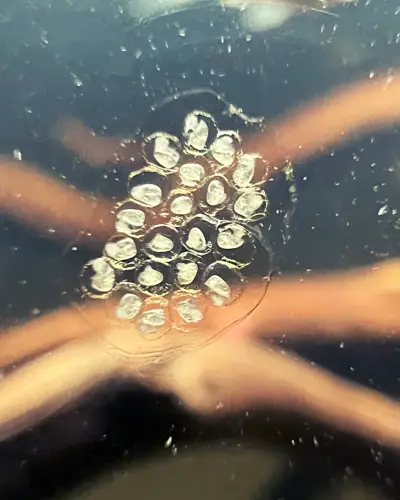
In this blog post, we’ll explore everything you need to know about snail egg care, from identifying different types of eggs to creating the perfect environment for them to hatch. Stick around, and let’s dive into this exciting chapter of aquarium life!
Table of Contents
ToggleWhat Do Aquarium Snail Eggs Look Like?
What do snail eggs look like in a fish tank? Aquarium snail eggs come in various shapes, sizes, and colors, depending on the type of snail species. For instance, mystery snail eggs are often laid in a clutch that resembles small, translucent blobs, usually pale pink or white.
In contrast, nerite snail eggs may appear as tiny white specks that adhere to aquarium glass or substrate. The appearance of these eggs can vary significantly, providing a fascinating glimpse into the reproductive habits of snails in your aquarium.
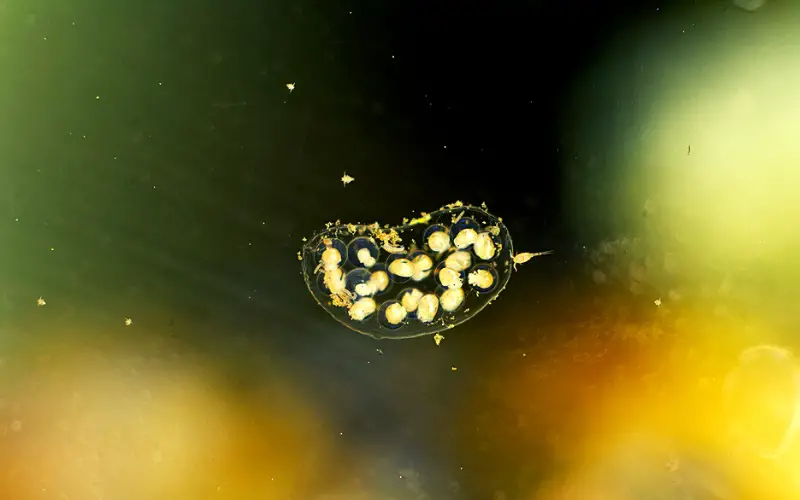
It’s essential to familiarize yourself with the different types of snail eggs to ensure you can identify and care for them properly.
Additionally, the eggs may be laid above the water line, particularly for specific species like apple snails. These eggs are often bright pink and can be easily spotted by aquarists.
Understanding the visual characteristics of the eggs in your aquarium will help you monitor the health of your snail population. Recognizing snail eggs is an important step in managing your tank’s ecosystem, as it ensures that you can take appropriate action to nurture or control the population of snails in your aquarium.
Snail Breeding Processes and Egg Growth in An Aquarium
Snails in your aquarium reproduce through a fascinating breeding process that can vary by species. Most freshwater snail species, such as mystery and ramshorn snails, are hermaphroditic, meaning they possess both male and female reproductive organs.
This unique trait allows them to mate with any compatible partner, greatly increasing their chances of reproduction. Once mating occurs, snails will lay their eggs in clutches, attaching them to hard surfaces, like the aquarium glass or plants.

The growth of snail eggs can be influenced by various factors, including water parameters, temperature, and availability of uneaten food.
Optimal conditions can lead to faster development, while poor water quality may hinder growth. As these eggs mature, you’ll notice changes in their appearance, indicating that baby snails are on their way.
Patience is key during this period, as the development process can take anywhere from a few days to several weeks, depending on the species and environmental conditions.
What To Do With Snail Eggs in Fish Tank?
When you discover snail eggs in the aquarium, you have several options depending on your goals for the snail population.
If you wish to promote growth, it’s crucial to maintain a stable environment with clean water and adequate food sources for the baby snails once they hatch. You may also consider creating a fry tank, where the newly hatched snails can thrive without competition from adult snails.
This strategy allows for better control of the aquatic ecosystem and the snail population.
On the other hand, if you are dealing with a snail infestation, you might want to remove the eggs. This can be done by carefully scraping them off surfaces using a razor blade or similar tool.
Additionally, keep in mind that certain aquatic species, like loaches or assassin snails, can naturally help control the snail population by preying on the eggs and juvenile snails. Assessing your aquarium’s needs will guide your decision on how to handle snail eggs in your tank effectively.
How to Hatch Snail Eggs in Fish Tank
Hatching snail eggs in a fish tank requires creating an environment conducive to the development of baby snails. Begin by ensuring that water parameters such as temperature, pH, and hardness are suitable for the specific type of snail you are breeding.
For example, mystery snails thrive in slightly warmer water, while nerite snails prefer a more stable environment. Regular water changes will help maintain a healthy habitat.
Once the conditions are right, it is essential to provide a balanced diet for the adult snails, as this will impact the quality of their eggs. Consider adding algae wafers or blanched vegetables to ensure they have the nutrients required for successful reproduction.
After the eggs hatch, ensure that the baby snails have access to food, such as finely crushed flakes or algae, to support their growth. Monitoring the tank closely during this period will help ensure a successful hatching process.
Snail Eggs in Fish Tank How Long to Hatch?
The time it takes for snail eggs to hatch can vary widely among different snail species. Typically, mystery snail eggs take about 2 to 4 weeks to hatch, depending on water temperature and other environmental factors.
In contrast, nerite snail eggs may require a longer incubation period, often extending beyond a month. Keeping the water conditions stable and providing a healthy environment will greatly influence the hatching timeline.
During this waiting period, aquarists should remain vigilant for any signs of hatching. Newly hatched baby snails, often referred to as fry, will emerge from the eggs and begin to explore their surroundings.
Providing adequate food and shelter in the aquarium is essential to ensure their survival during this vulnerable stage. Regularly monitoring their progress will help you understand the specific growth patterns of the snails in your tank, allowing you to make necessary adjustments to care for them effectively.
How to Get Rid of Snail Eggs in Fish Tank
If you find yourself dealing with an overabundance of snail eggs in your aquarium, there are several methods to consider for removal.
The first step is to identify the type of snail species you have, as different species lay eggs in various locations and appearances. Using a razor blade or scraper, gently remove the eggs from the aquarium glass or substrate. Ensure that you dispose of them responsibly to prevent any accidental reintroduction.
One approach is to remove them by hand. You can gently extract the young snails using a net or tweezers and transfer them to another tank or offer them to other aquarium enthusiasts. Although this process may take some time, it enables you to control the snail population as you wish.
In addition to manual removal, consider introducing natural predators such as loaches or assassin snails into your tank. These species will help control the snail population and reduce the likelihood of future infestations.
Another preventive measure is to monitor feeding practices, as uneaten fish food can contribute to snail overpopulation. By keeping food levels in check, you can help manage the growth of snails in your home aquarium more effectively.
Commonly Asked Questions about Aquarium Snails Eggs Hatching (FAQs)
Do snails lay eggs in fish tanks?
Yes, many snail species lay eggs in fish tanks. These eggs can be found on various surfaces like plants, rocks, or the glass, often appearing as small, jelly-like clusters or individual round objects.
What does snail eggs look like in a fish tank?
Snail eggs in a fish tank typically appear as small, translucent clusters or individual eggs, round, jelly-like objects. They can be found on surfaces like plants, rocks, or the glass.
What is the problem with Malaysian trumpet snails?
Malaysian Trumpet Snails are notorious for overpopulation in aquariums. They reproduce rapidly and can outcompete other invertebrates for food, leading to imbalances in the ecosystem.
Are ramshorn snails good or bad?
Ramshorn snails are generally considered beneficial for aquariums. They help clean up algae, detritus, and uneaten food, improving water quality. However, they can overpopulate if not managed.
Should you remove snail eggs from an aquarium?
Snail egg removal depends on the snail species and your tank’s desired population. Beneficial snails may not require egg removal, while those pest snails overpopulate should have eggs removed to maintain balance.
What do I do with snail eggs in an aquarium?
For beneficial snails, you can leave the eggs. For those that overpopulate, remove the eggs by gently scraping them off surfaces or siphoning them out during water changes.
How long do snail eggs take to hatch in an aquarium?
Snail eggs in an aquarium typically hatch within 1-5 weeks, depending on water temperature and species. Warmer water generally leads to faster hatching.
Will fish eat snail eggs in a tank?
Yes, many fish species will eat snail eggs. Fish like loaches, tetras, and some catfish are known to consume snail eggs, helping to control snail populations in the aquarium.
Should I destroy apple snail eggs in fish tank?
Yes, you should generally destroy apple snail eggs in your fish tank. Apple snails are prolific breeders, and their populations can quickly become unmanageable, potentially bleach dip aquarium plants and disrupting the aquarium ecosystem.
What do snails eat in an aquarium?
Snails in an aquarium primarily consume algae, decaying plant matter, detritus (leftover food and waste), and biofilm. Some snails may also graze on live plants.
Conclusion
Hatching snail eggs in fish tank can be a fascinating and educational experience for aquarium enthusiasts. By understanding the characteristics of snail eggs, the breeding process, and the necessary care for baby snails, you can create a thriving aquatic environment. Whether you choose to nurture your snail population or manage it through removal and natural predation, effective strategies will ensure your aquarium remains balanced and healthy. Embrace the journey of snail breeding and enjoy the unique charm that these aquatic creatures bring to your aquarium.
You might also like
- 7 Stunning Mystery Snail Colors You Never Knew Existed!
- Mystery Snail Eggs Fell in Water (3 Major Causes & Solution)
- How Long Does It Take for Mystery Snail Eggs to Hatch (FAQ)
- Identifying Infertile Mystery Snail Eggs: (A Complete Guide)
- What Do Mystery Snail Eggs Look Like: (Snail Breeding Guide)
- Preventing Nerite Snails Eggs in Your Aquarium: 3 Secret Ways
- Nerite Snails Horned 101: A Comprehensive Guide for Beginners
- How Often Do Nerite Snails Laying Eggs: (A Comprehensive Guide)
- What Do Nerite Snail Eggs Look Like (Prevent Overpopulation)
- How Long Do Snail Eggs Take to Hatch: A Comprehensive Guide
- Freshwater Snail Eggs on Aquarium Glass: What You Should Do?
- Identifying Great Pond Snail Eggs in Aquarium: Comprehensive Guide


